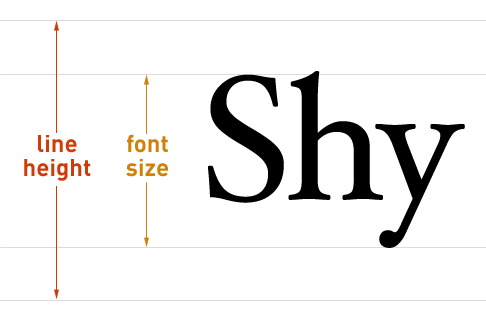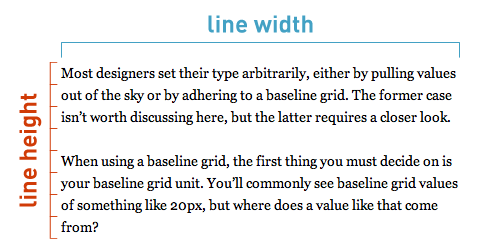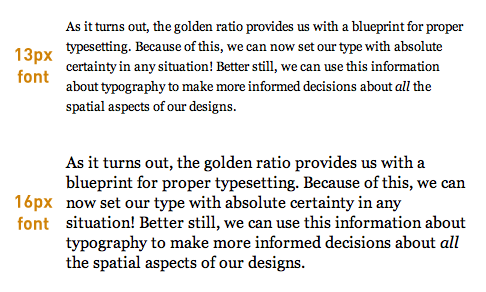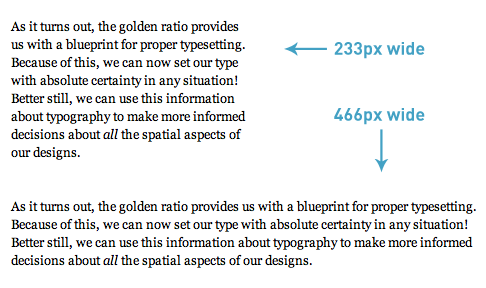As an entrepreneur who has been on the client’s side of the design and development process, I’d like to discuss the thought process of the client, as well as some effective ways to interact with them. For example, why do they ask for Shakira music on the home page? And how do you respond to that?
I was recently referred to Sam Barnes’ piece on Smashing Magazine “How to Explain to Clients That They Are Wrong.� The article was well written and made a lot of sense to me, but there are two sides to every story, and I’d like to add value to the argument by responding from the client’s point of view.
For the most part, Sam did a great job of discussing how to evaluate and act on poor decisions made by clients. What he missed, however, was the impact that the nature of the relationship between clients and creatives has on how decisions are made by both sides. By “creatives,� I mean anyone involved in the design or development of a website or application. Understanding this relationship will enable you, and your clients, to make better decisions about the product.
What’s On the Line For Us
Before getting into the decisions that entrepreneurs make, let’s look at some of the factors that motivate these decisions. Setting the scene will shine a light on the thought process of entrepreneurs and give you a better idea of how to deal with them.
You’ll notice I use the terms “entrepreneur� and “client� interchangeably. Even if your client works within the confines of a corporation, as opposed to at the top of a new venture, it would not be unusual for them to act in an entrepreneurial capacity. And even if they aren’t entrepreneurs, but middle men who were assigned the project, chances are they will still behave accordingly.

How do you deal with clients who often come up with weird, irrational requests? Image source
First, let’s think about the person you’re working with. They believe in an idea. They believe in it so much that they’ve left a paying job for it. They’ve worked nights and weekends for it, alienated their spouse, friends and family for it. They’ve begged, borrowed and stolen for the opportunity to pursue it. They’ve put everything on the line for their idea, their vision. And you know what the most important part of their vision is?
You.
It’s not them. And to be honest, it never really was. The first question investors ask after hearing someone’s idea is, “OK, who’s building it?� Your client knows that their creative team is the only thing that can make their idea a reality.
You’re the most important piece of their puzzle, and, despite what they tell themselves, what they know about you before starting the project is often limited.
So, how did they find you?
Clients turn over every stone in search of a designer or developer, because, by that time, the necessity of a good creative team has settled in. Entrepreneurs might look harder than others because of the pressure of their particular situation, but the importance of a good creative team is lost on no one. And this isn’t like finding a lawyer, a doctor or even a girlfriend.
It’s way harder.
The Leap of Faith
There are three gigantic problems with the process of finding a creative team. First, the client has probably never done this before. Secondly, finding a creative team is tough. Products such as Elegant.ly will help, but because clients generally don’t speak your language, assessing the strengths of a firm and how it would mesh with their product is difficult. When the team I picked told me they were experts in Ruby on Rails, my first thought was, “Is that a train or a restaurant?� Thirdly, and by far the most important point, for those of us not in the Web design or development community, feeling comfortable with our evaluation of creatives is impossible.
This is a relatively young industry, one with very low barriers to entry. Heck, my designer took his first client when he was 13. There are very few, if any, metrics we can use to evaluate a creative team. We can look at its past work, speak with the head of the team and maybe get some sort of sample or mock-up, but for the most part, we are flying blind. There are no requisite degrees, certifications or guarantees. If you go to a physician who hasn’t finished college, you probably wouldn’t be willing to let them operate on you. A developer who hasn’t gone to college could build you the next Foursquare.
The Search
In our search for a creative team, we come upon cousins and uncles of acquaintances, people who have designed investor-relations websites for Fortune 500 companies, people who wait tables but build iPhone apps on weekends. We have absolutely no idea what to think of all this.
First-time clients especially don’t understand how hard their product is to create, or how long creative design takes, or even if you’ve done this sort of work before. It’s all Japanese to them, and it’s an enormous leap of faith. All we can do is look at some of your prior work and decide whether we like it. In what other sphere of life would you make a decision this important on a gut reaction? (Wait, don’t answer that.) It’d be like grabbing someone at the grocery store and asking them to marry you because you both have Fruit Loops in your carts.
Even when we look at successful companies in our fields, their success is not always commensurate with the development or design of their products. Take Craigslist: great business idea, poor design; but it doesn’t matter because the content is great. On the other hand, Flipboard’s design is fantastic, and that’s enough to make the product successful, even although its functionality isn’t really revolutionary.
Grasping For Control
With reservations and doubts lingering in the back of the client’s mind, in steps the creative team. You start pumping stories into Basecamp, PivotalTracker or some other product-management system that the client’s never heard of, and suddenly they are on your turf. Now the client works when you work, and often sits quietly on their hands when you don’t. The product goes when you say it goes, and their input is limited. Worst of all, we flat out don’t understand what you’re doing.
This is extremely hard for people who are used to complete control. Your client has gained so much momentum to get to this point that, when the creative team takes charge, the ground drops from under them like they’re some unfortunate cartoon character. This reversal of control is jarring.
This would be fine if the entrepreneur was working with a lawyer, an accountant or even a bank. But early on in the life cycle of a company that depends on a creative team for its success, nothing, and I mean nothing, is as important as the creative team. And our control over the success of this phase is so limited. That’s why we make uninformed suggestions like, “Let’s make that @ symbol spin,� and “I think users would like some Shakira playing when they land on the home page. I know I would.� Because we’re grasping at straws.
We are trying to hold onto our vision, because suddenly it’s in your hands. We may know what we want, but we often don’t know how to do it, and we have trouble expressing it. I’ve often found myself telling my developer things like, “I want a magic search box that pulls information from the Facebook API [I learned that term a few months ago, no big deal], Twitter and Foursquare and spits out relevant people based on our compatibility algorithm,� only to have him respond, “… Yeah. Let’s start by allowing users to log in with their Facebook account.�
I know how I want the product to feel to the user, but I have no idea how to get there without my team’s help. Saying, “I want it really simple, easy to use and elegant� is not helpful. Grasping at some visual element that we comprehend is sometimes the only bullet in our gun.
So, How Do You Deal With Overstressed, Irrational Clients?
Now you have an idea of the sometimes fragile psyche of the client. The question is, how do you handle us when we say we want Shakira?
Sam’s points are all well taken and, for the most part, right on. But they are directed at a rational, faceless client. The overview is good, but implementing it in real life would be difficult. So, here is the perspective of a client with a face. The following five actionable tips should drastically help your client relationships.
- Show us.
This one is the most important. It’s very hard for us to visualize our idea. We know how we want the product to feel, but we don’t know how to get there. We would certainly recognize that Shakira isn’t the answer if you showed us this on our website — or on a comparable website if building our mistake would be too time-consuming. Usually, if the client was savvy enough to get to this step in the process, they would know what works and what doesn’t. And if they don’t, their idea is hopeless anyway. - Tell us.
This one wasn’t in Sam’s points. Good entrepreneurs are flexible and can adjust their vision to meet the reality of the situation. If we want something, but you think it would take too long and not be worthwhile, tell us. Suggest a workaround if you want, or just ask us if there’s another way. Entrepreneurs are usually great at creative solutions; we make our living by avoiding barriers. But we can only avoid barriers if we know what they are. - Explain the rules of the game.
If you’re building a basketball, you know what you can and can’t do. You could probably make one that’s bouncier or more durable than competing products. But you couldn’t make one that goes in the basket every time. You know your limitations, but sometimes we don’t, and creativity is only able to flourish inside the box of reality. Because we don’t know the rules of the design and development game, we often don’t know what’s possible. More often than not, we’ll assume that something isn’t possible when it actually is. The head of my creative team had a good solution for this: he created a folder of ridiculous ideas that I wished could be part of the website, and I dumped stuff in there from time to time. More often than not, he’d ping me saying, “Hey Brian, that’s possible. Let’s try it out.� Being creative is difficult when the canvas is blank. If you can give us a line to start with, some sense of what you are capable of, it’ll help us enormously on the creative side. - Be confident and enthusiastic.
Everyone appreciates an expert. Sam touches on this, and it’s extremely important. When I told my designer that I was considering profile pages that end users could design, he said something like, “Well, it certainly worked for MySpace.� Point taken. Demonstrating your expertise puts clients at ease and instills trust in your decision-making abilities. Also, don’t be afraid to occasionally ask for forgiveness rather than permission (as long as the change is not customer-facing). It will reaffirm that we made the right decision. Nothing is more invigorating than someone who believes in your vision. - We can’t act like locals.
Clients aren’t completely oblivious to their mistakes, either. They know that some of their suggestions are absurd. They know that they don’t understand this stuff one-tenth as well as you do. They know they’ve stepped into a subculture that they couldn’t possibly fit into. It’s like when you go on a ski vacation and try to act like the locals. No matter what you do, you won’t be one. And we hate that we are an outsider in your world. That manifests itself in a number of ways: weird suggestions, holding firm on an irrelevant point, demanding certain color schemes that probably don’t matter (but sometimes do). This will still happen, but now that you know where they’re coming from and how to assuage them, you should hopefully have a more effective connection with clients. On the flip side, expect to be treated with the same level of suspicion and hesitation when you step into our world. Sam urges you to speak the client’s language, to set goals in business terms. Be very careful with that one. Misusing one business buzzword can waste your credibility, just as one suggestion for a spinning @ symbol will make you wary of any other design ideas. Discussing markets that you have exposure to but aren’t immersed in can have adverse effects. Know that we are all tourists. Which leads to the final point.
The Odd Couple
In writing this article, I realized how odd the relationship is between creatives and clients. Without my creative team, I would have no shot at getting my company off the ground. I rely on them 100%, but I have no clue what they do, how they do it or if the work they do is reasonably priced. This forces me to try to speak their language, to attempt to enter their world by learning quickly, and to try to maintain control of a vision that they are responsible for bringing to life.
Creatives, on the other hand, rely on clients only somewhat. They don’t live and die by each project, as clients do. Their work is in great demand; many of the firms I considered are growing quickly in this recession.
However, bits and pieces of Web design and development work are slowly being fragmented and commoditized, and for the same reasons that evaluating designers and developers is difficult: the barriers to entry are low. This opens the door for 99Designs to pick off clients, especially vulnerable entrepreneurs. These services leverage the crowdsourced model by matching designers who have little or no experience with clients who don’t understand the nuances of the craft well enough to be able to tell. This pushes creative firms to differentiate themselves through means that clients can understand. Business acumen is an incredibly helpful skill for creatives to have, and something 99Designs can’t offer.
Summary
So, we’re left with two groups, each possibly operating in unknown waters, working to create a product that requires both of them to be firing on all cylinders in order to succeed. That being said, do business-savvy creatives exist? Heck, yeah. I’ve got them helping me build my company, and it makes all the difference in the world. Do design- or development-savvy entrepreneurs exist? Probably. I’ve got a Mac — does that count?
The goal is to establish a working relationship between the two parties that leverages the strengths of each to quickly and effectively create a product and bring it to market. The tips above should help those working on the creative side. I’d be interested to hear a designer or developer’s take on what I should be doing to get the best out of my creative team. After all, we’ve got to have more in common than liking Fruit Loops for this thing to work.
Go easy on us poor entrepreneurs. I realize we make dumb suggestions sometimes, but it’s just an attempt to maintain some control over a process that we occasionally feel we’ve lost control over. And consider the business decisions that clients make from both sides. We’ve had a lot of practice with this stuff.
Related Articles:
You might be interested in the following related articles:
- How To Respond Effectively To Design Criticism
- Useful Business Advice And Tips For Web Designers (an overview of articles on Smashing Magazine)
(al)
© Brian Scordato for Smashing Magazine, 2011.








































